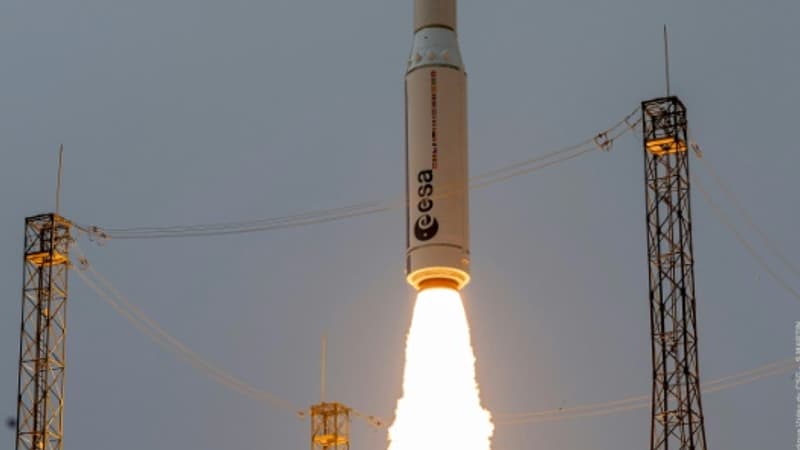Launch scheduled from the Kourou spaceport in French Guiana on 3 September at 10:50 p.m. local time: this will be the last mission for the Italian Vega launcher from Avio, in service since 2012, before delivery to the Vega C, an improved and more powerful version, grounded since 2022 following an accident.
This mission, called VV24, will place its passenger, the Sentinel-2C satellite of the European Union’s Copernicus programme, into a sun-synchronous orbit at an altitude of around 780 km. It will enter orbit 57 minutes after lift-off.
As part of Europe’s leading Earth observation space programme, the Sentinel-2C satellite will support a wide range of operational applications, including agriculture, water quality monitoring, management of natural disasters such as forest fires, earthquakes or floods, as well as the detection of methane emissions.
The mission will honour “Arianespace’s commitment to guarantee Europe independent access to space,” said the French group Arianespace, which is managing the launch, in a statement. Since the last flight of Ariane 5 in July 2023, Europeans have no longer been able to put a satellite into orbit on their own.
Pressure on Vega C
The success of the first flight of Ariane 6, whose development was delayed by four years, in early July gave wings to the Europeans, marking the end of a “black” year during which the Old Continent was deprived of access to space. The resumption of flights of their launchers is all the more strategic for the Europeans as they are having a hard time surviving against the American giant SpaceX, which launches its reusable Falcon 9 rockets about twice a week.
Cautious optimism is needed regarding Vega C, whose first commercial flight in December 2022 ended in a failure that led to the loss of two Airbus satellites, while Europe was already deprived of Soyuz following the Russian invasion of Ukraine and awaiting Ariane 6.
“I am confident that we will be ready to launch Vega C by the end of November,” said Toni Tolker-Nielsen, director of space transportation at the European Space Agency (ESA), adding that the engine design, originally plagued by several anomalies, had been “fully revised” and the latest tests were conclusive.
According to him, ESA is preparing a second flight of Ariane 6 in December, as well as six Ariane 6 launches and four Vega C launches in 2025.
“We have emerged from a technical and political crisis in terms of launchers,” said Pierre Lionnet, director of research at Eurospace, which brings together European space manufacturers. “On the other hand, the big question is who will buy enough launchers so that the operator and manufacturers can provide services at a price that is acceptable to customers and that allows the entire industrial chain to make a profit,” he added.
Of all the world powers, Europe is “the smallest customer for launch needs” and must find its place in a market “that has changed radically,” he concludes. For Toni Tolker-Nielsen of the ESA, it will take at least “ten years” for Europe to be competitive in this field compared to the United States.
Source: BFM TV


